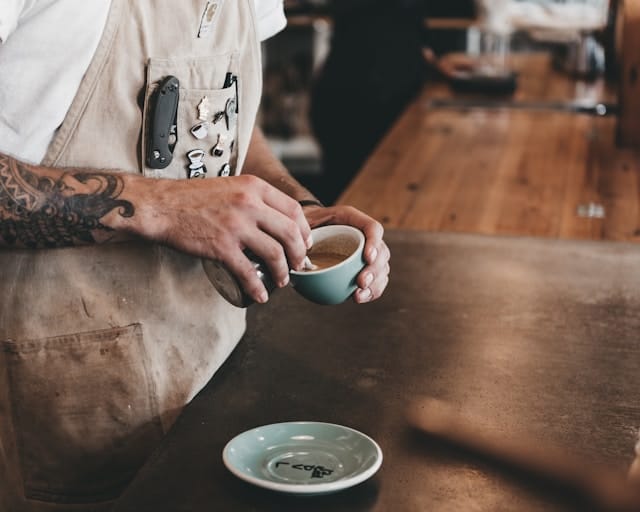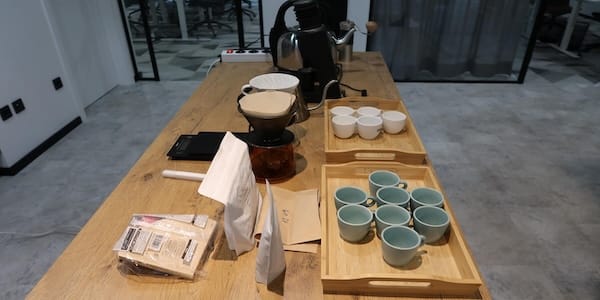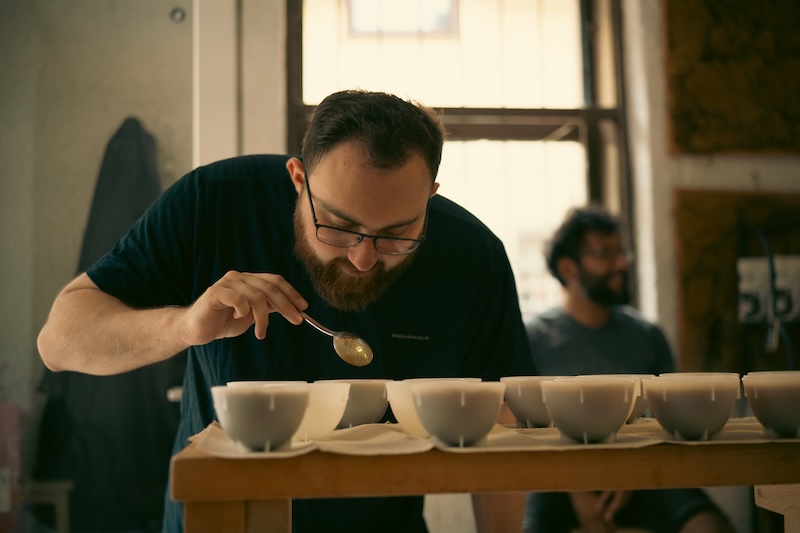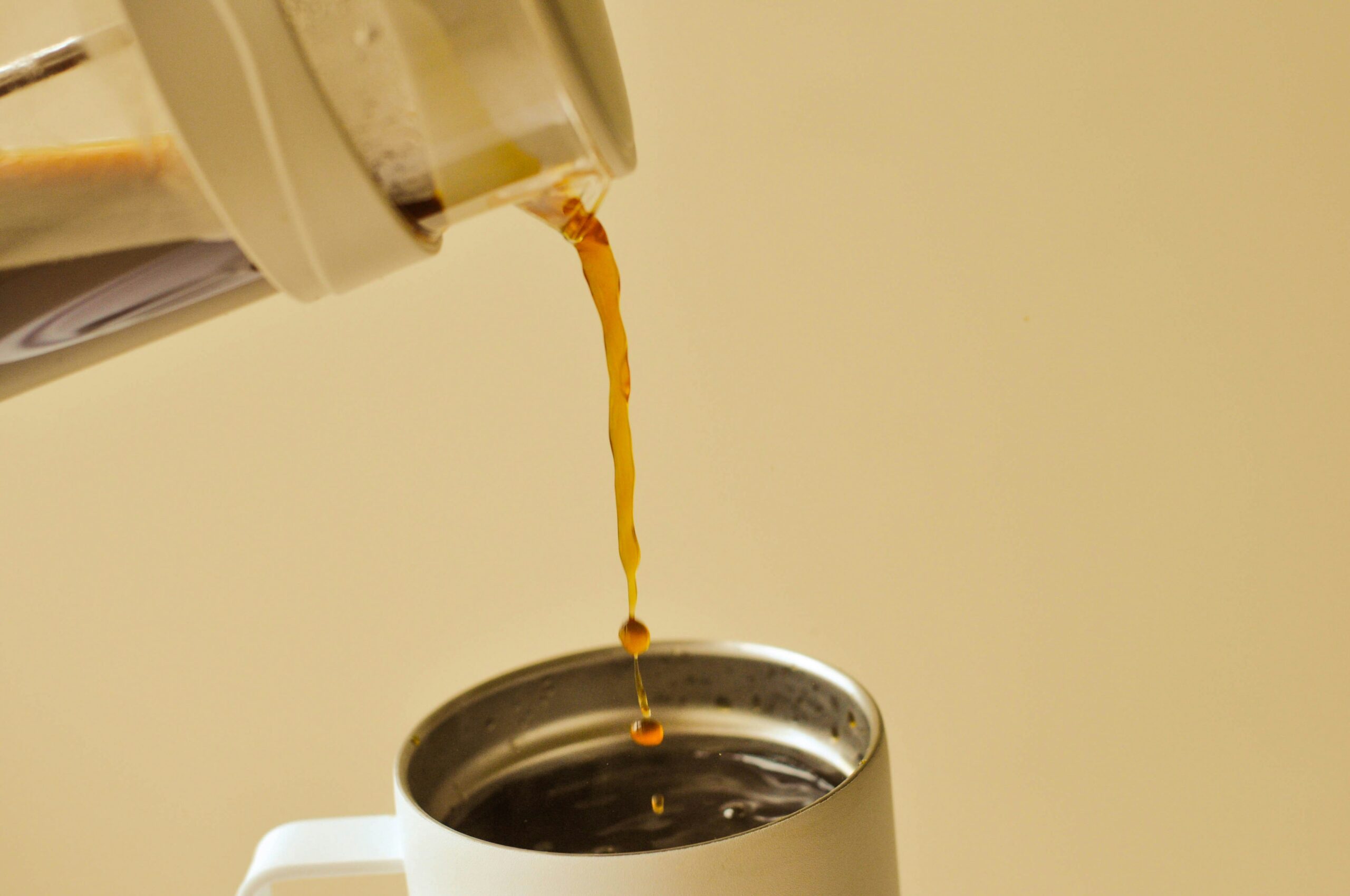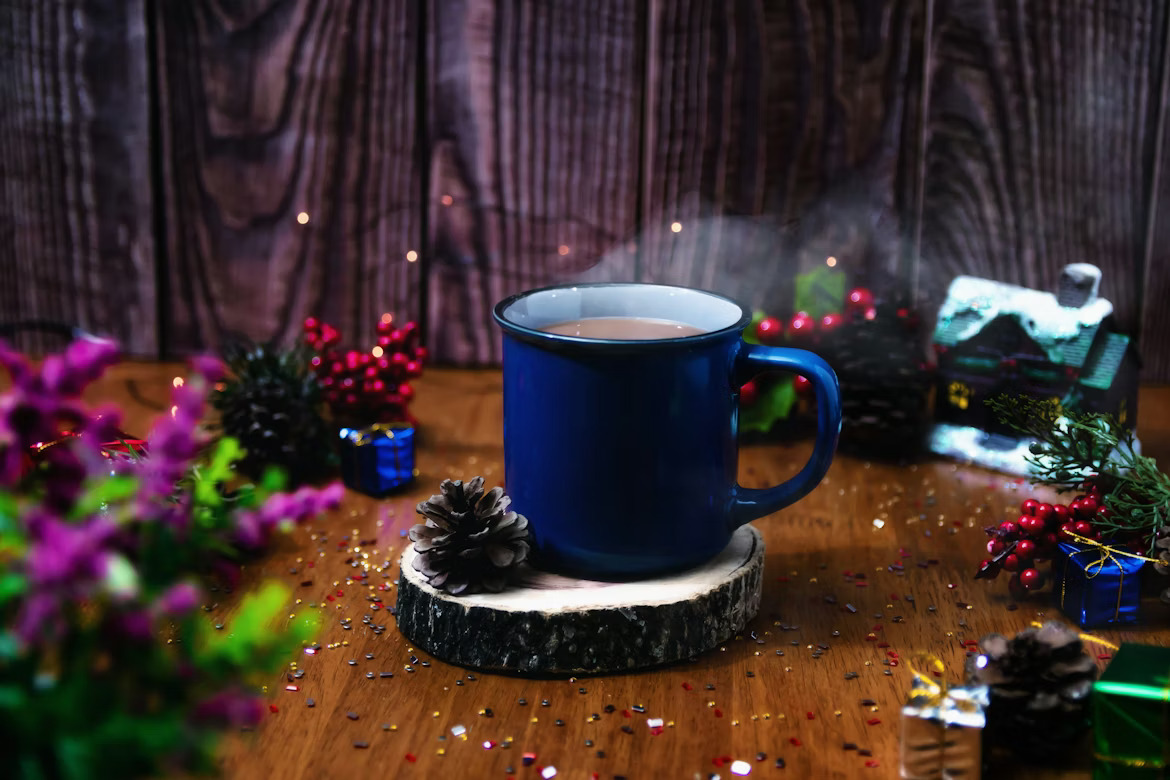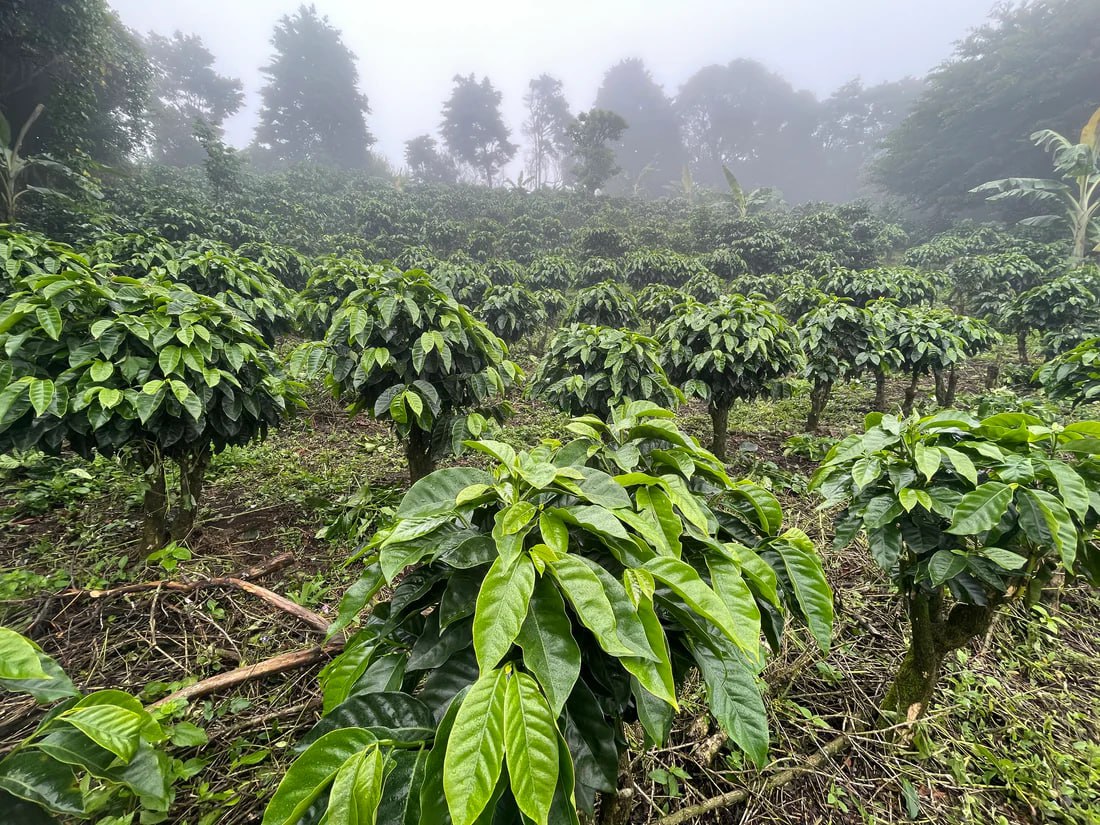ALL POSTS
ALL POSTS
Filter Coffee Guide
13 min read
Last edit: Jul 9, 2025
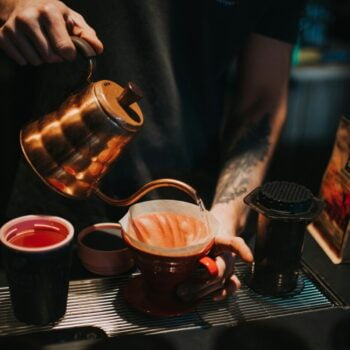
Filter coffee is one of the most popular and oldest methods of brewing coffee worldwide. This kind of coffee drink provides a clean, rich, and flavorful cup that highlights the unique characteristics of the coffee bean.
In this guide, we will review the essential aspects of brewing filter coffee that any coffee lover and home barista must know.
What is Filter Coffee?
Filter coffee, also known as batch brew or hand brew, is a type of coffee beverage made using hot water, a specialized tool or a machine, and a paper, cloth, or metal filter.
Filter coffee is aromatic, usually light or medium on the body, and the beverage is served both hot and cold. Compared to espresso, filter coffee is less oily but more potent with caffeine due to the longer time of extraction.
Brewing Methods
Filter coffee comes in various styles and forms, from manual pour-over methods to automatic drip coffee makers. Each technique differs by the way water interacts with the coffee grounds as well as in extraction time and as a result yields a plethora of flavor profiles.
Essentially, there are two ways coffee is brewed: immersion and percolation. We covered these methods in our Cold Brew Guide.
The same principles are applied to hot water brewing. Percolation methods are generally more watery, have a more intense and bright aroma, and are rich with clean acidic flavors with almost no aftertaste. Meanwhile, immersive brewing allows for a richer cup with a more balanced aroma and a more pronounced aftertaste.
There is no saying what method is ultimately better since using both for the same coffee will yield equally beautiful results.
Let’s go through some of the most popular brewers of each method:
Pour-Over
Pour-over is a category of brewers that predominantly consists of percolative tools. These are manual brewing methods that involve pouring hot water over ground coffee in a pre-wet filter.
Popular pour-over devices include the Hario V60, Origami, Kalita Wave, and more niche devices like Orea and Dotyk. Each device has subtle differences in design and functionality that impact the flavor of the brew. Also, they allow room for experimentation by using different compatible filters, whether paper-made or metal.
Poor-overs can be further classified as flat-bottom and cone-bottom. While flat-bottom brewers like Kalita Wave provide a thicker body and balanced flavor profile, cone-bottom brewers like Hario V60 can provide more clarity and intensity.
In addition, there is a subcategory of pour-overs that allow for even more versatility by being immersed and percolative brewers simultaneously. Tools like Clever Dripper and Gina give the user a choice of what method of extraction to use at which moment.
Key Features:
- Precision and control over water flow.
- Highlighted acidity and clarity in flavor.
- Often used for single-origin specialty beans to showcase unique flavors.
- Good for serving one or two people.
- Various materials to choose from (plastic, metal, ceramic, glass).
Drip Coffee Makers
Drip Coffee Makers are automatic drip coffee makers and household and cafe staples. This method automates the process of filter coffee brewing, making it ideal for those who prefer convenience and consistency.
However, most machines of this type do not allow for much control over the brewing pattern and water flow. This sometimes results in a less complex or one-sided flavor profile.
Key Features:
- Simple and convenient.
- Ideal for brewing large quantities of coffee.
- Typically provides a balanced, less intense flavor compared to pour-over.
French Press
Although technically not a filter coffee method (as no paper filter is involved), it still deserves mention. This method involves steeping coffee grounds in hot water before pressing the plunger with a metal mesh to separate the grounds. This makes it one of the most popular full-immersion coffee brewing tools.
While more robust and full-bodied than filter coffee, it can offer a similar brewing experience. Making coffee with a French press doesn’t require much skill or any extra tools apart from a kettle.
Key Features:
- Rich, fuller body compared to drip or pour-over.
- Simple to use, with fewer accessories required.
Aeropress
Aeropress is a versatile brewing method that combines immersion and pressure, creating a brew that resembles French Press or flat-bottom pour-over, depending on how you use it. Unlike French Press, this method encourages you to use a paper filter.
Aeropress Can also be used as a zero-bypass poor-over or even mimic a weak espresso-like drink with the addition of some extra modules.
Key Features:
- Quick and portable.
- Customizable brewing style.
- Produces a clean, smooth cup.
Choosing Coffee
The type of coffee you choose has a significant impact on the final flavor of your filter coffee. There is no telling concretely which coffee origin or processing is best for a named filter coffee preparation tool but it is highly recommended to opt for a specialty coffee lot since they are often more complex and delicate.
Here are some factors to consider:
Coffee Beans: Arabica vs. Robusta
Arabica and Robusta are the two main types of coffee beans used in the industry. However, Arabica beans are known for their delicate and sweet flavors, often featuring fruity or floral notes. Robusta beans, on the other hand, offer a bolder, more intense flavor with a lot of bitterness which in filter coffee doesn’t allow for a pleasant experience.
Because of this major destination, Robusta is often not considered suitable for filter coffee brewing.
Single-Origin vs. Blends
- Single-origin: Coffee sourced from one region or farm, often celebrated for its distinct flavor profile. These are ideal for brewing methods that highlight the nuances of the terroir and processing, like pour-over.
- Blends: A mix of beans from various regions, designed to offer a consistent and balanced flavor. These are usually found as espresso, but we see a growing trend of using specialty coffee blends in batch-brewed coffee as well.
Roast Level
The roast level of coffee beans also plays a significant role in how they perform in filter coffee. Although the actual color of the beans can be deceiving since some lots like decaf will always look darker than high-grown coffees it is still worth mentioning the impact that roast profile has over the resulting brew.
- Light Roast: Retains much of the coffee’s original flavors, such as fruity or floral notes. Mind that it also allows for more acidic and less rich aftertaste coffee. This makes it a good choice for pour-over.
- Medium Roast: A balance between the original flavors of the bean and the roasted and developed flavors. Works well for most brewing methods.
- Dark Roast: Emphasizes the flavors that are created during the roasting process, resulting in a robust, smoky, and dark chocolate profile. Best suited for espresso and is rarely used for filter coffee.
Grind Size
Grind size directly affects extraction time and hence the flavor.
For filter coffee, whatever the method, the time of brewing is predominantly around two to five minutes. By making grind size finer (smaller number on a dial) you are increasing the time water will need to penetrate the coffee grounds. Respectively, a coarser grind (bigger number on the dial) will result in chunkier ground and will let water flow more easily. It is especially important when brewing pour-overs, but is also a factor to be considered in an immersive method.
The “finer and coarser” and “like sea salt” don’t translate well to the actual grind size so it is recommended to find a guide bout your grinder specifically or consult with your favorite friendly barista.
- Pour-Over: Medium grind.
- Drip Coffee Maker: Medium to coarse grind.
- French Press: Coarse grind.
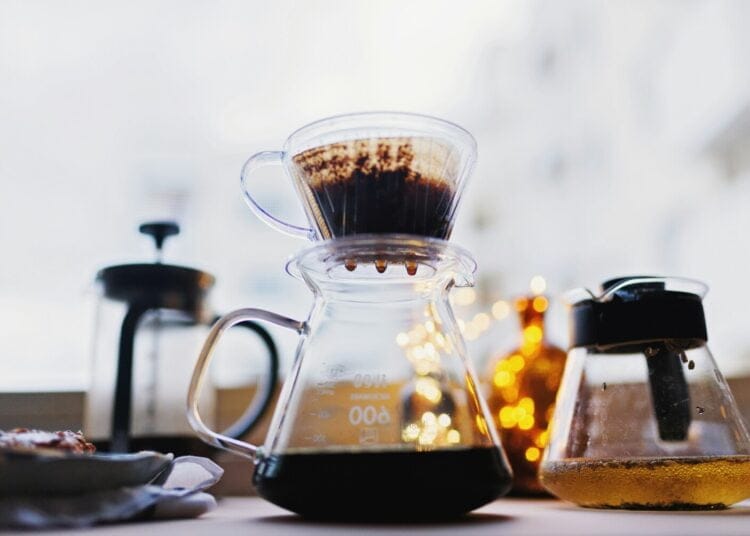
Equipment and Tools
Having the right equipment can make a significant difference in your routine of brewing coffee. Here are some essential tools for brewing any filter coffee:
1. Coffee Grinder
Freshly ground coffee is crucial for achieving the best flavor. A burr grinder is recommended over a blade grinder as it produces a more consistent grind size and allows for fine-tuning, which directly impacts extraction and taste.
Burr grinders come in different shapes and forms as well as price. They also can be manual or electric. For home use, we recommend a Comandante hand grinder and a Varia VS3 electric grinder.
2. Scale
Precision matters when it comes to brewing coffee. A digital scale allows you to measure your coffee-to-water ratio accurately, ensuring consistency in every brew.
These can be either a coffee-dedicated model or any other, as long as they are convenient, fast in taking measures, and affordable.
3. Kettle
For pour-over brewing methods, a gooseneck kettle is essential for controlling the flow of water, which influences the extraction process.
Our recommendation is an Artisan Goose-neck kettle by Brewista which allows users to control the flow of water as well as the temperature of it.
4. Filters
Filters come in different materials, each with its impact on flavor and texture, as well as a time of percolation:
- Paper filters: Provide a clean, smooth cup by absorbing some oils and trapping fine particles.
- Metal filters: Allow more oils and fines to pass through, resulting in a fuller-bodied coffee.
- Cloth filters: Offer a middle ground, trapping some fines and oils while allowing a rich, smooth flavor.
5. Brewing Devices
Choosing the right brewing device depends on your preferred method:
- Pour-over devices: Plastic Hario V60, plastic Origami, Kalita Wave, Orea, Dotyk
- Drip Coffee Makers: Various models from brands like Bravilor Bonomat, Bonavita, or MoccaMaster.
- French Press: any will do.
Water for Filter Coffee
Water makes up around 97% of your cup of filter coffee, so its quality is essential. Here are some key considerations for using water in filter coffee brewing:
1. Water Quality
Using clean, filtered water is crucial for good coffee. Tap water that’s too hard or too soft can affect the flavor. Ideally, water for brewing coffee should have a neutral pH level (6-8) and be free from impurities. The total hardness recommended by SCA is 75-175 ppm.
For more tuning, one can use various kits with solutions specifically designed for coffee brewing like Third Wave Water.
2. Water Temperature
The temperature of the water can greatly influence extraction. The ideal brewing temperature for filter coffee is between 90°C to 96°C. Water that’s too hot will most likely over-extract, leading to bitterness, while water that’s too cool will under-extract, resulting in a flat, weak cup.
3. Water-to-Coffee Ratio
The standard ratio for filter coffee is 1:15 to 1:17 (1 gram of coffee to 15–17 grams of water). Adjusting this ratio allows you to experiment with the potency of the resulting coffee. A higher water-to-coffee ratio yields a lighter, more diluted cup, while a lower ratio produces a stronger, more intense brew.
Flavor Profile
Filter coffee is celebrated for its ability to bring out the nuanced flavors of the coffee bean. The brewing method, coffee type, and water all play a role in composing the final flavor profile. Here are a few common flavor profiles found in filter coffee:
- Fruity: Found in light-roast single-origin coffees from regions like Ethiopia or Kenya. Expect flavors like berry, citrus, or tropical fruit.
- Floral: Another sign of light roasts, with subtle floral notes such as jasmine or tea-rose.
- Nutty/Chocolate: Common in medium roasts, particularly from South and Central America. Think hazelnut, almond, cocoa, or milk chocolate.
- Medicinal/Earthy: Typically found in dark roasts or robusta beans. Flavors may include hints of tobacco or even a smoky quality.
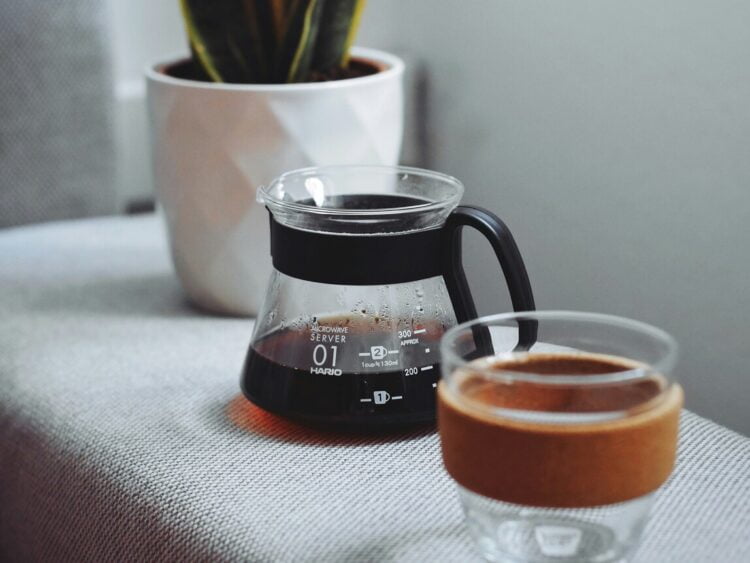
Serving
How you serve your filter coffee can be just as important as how you brew it. Here are some tips to enhance your coffee-drinking experience:
1. Temperature
Serve coffee immediately after brewing for the best flavor. Once brewed, coffee begins to lose its optimal taste after about 30 minutes. Avoid reheating coffee, as it can result in a burnt or bitter flavor.
2. Glassware
Using the right cup can enhance the overall experience. A thinner, ceramic cup can help maintain the heat of the coffee while also allowing you to appreciate the aroma. Some prefer using glass cups or ceramic mugs for those who want a stronger focus on the sensory experience.
3. Milk and Sugar
While purists and professionals prefer and advocate drinking filtered coffee black to fully appreciate the flavor, adding milk, sugar, or cream is still an option. Just be mindful that these additions will mute most flavors of the coffee.
We strongly recommend having any filter coffee black.
4. Stirred, not Shaken
Lastly, always stir up the brew before serving to ensure that the beverage is homogenous.
Troubleshooting
Even with the right beans, water, and equipment, things can sometimes go wrong in the filter coffee brewing process. Here are some common issues and how to fix them:
1. Bitter Coffee
If your coffee tastes bitter, the water might be too hot, or the coffee may be over-extracted. Try lowering the temperature of the water and ensuring your grind size is not too fine so that your extraction time is adequate to the original recipe.
2. Weak or Empty Coffee
Weak coffee can be caused by under-extraction, either due to water that’s too cool, too coarse a grind, or not having enough coffee in your ratio. Try increasing the coffee amount or adjusting the grind size.
3. Way too Sour Coffee
Overly sour or acidic coffee typically results from under-extraction or roasting too light. To balance the extraction, use a finer grind, hotter water, or extend the brew time slightly.
4. Sediment in Coffee
If there’s sediment in your cup, check the quality of your filter or grind size. Coarse grinds and poor-quality filters can allow fines (tiny coffee particles) to pass through, leading to a gritty texture.
SpecilatyKava.si Favorite Filter Coffee Recipes
Here are two recipes that we prefer using for any coffee beans that happen to come into our possession:
1. Our Favorite V60 Recipe:
- Heat your favorite water to 96°C.
- Prewet a Sibarist fast cone paper filter.
- Grind your coffee of choice so that the total time of brewing is no more than 2 minutes.
- The Brew Ratio we use is 5,5 grams of ground coffee to 100 gr of water.
- To make 300 grams of coffee brew take 16,5 grams of coffee beans.
- Place the ground coffee into the pre-wet filter in the brewer, check the temperature of the water.
- Start the timer and make the first pour, which is 50 grams of water. Wait until 20 seconds or until the water goes through the coffee.
- Second pour: gently pour 100 grams of water in a circular motion, covering all the coffee grounds. Do it in 15-20 seconds and wait until the timer reads 1 minute.
- Third pour: in 20-25 seconds and 190 grams of water. The extra 40 grams here mitigate whatever water quantity coffee grounds have absorbed.
- Pour the resulting beverage into a separate vessel and mic.
- Serve and enjoy!
2. American Press
- Heat your favorite water to 96°C.
- The Brew Ratio we use is 5,5 grams of ground coffee to 100 gr of water.
- To make 300 grams of coffee brew take 16,5 grams of coffee beans.
- Place the ground coffee brewing chamber, check the temperature of water.
- Start the timer and pour 340 grams of water.
- Wait until 4 minutes.
- Break the crust that has formed with a spoon.
- Filter the brew.
- Transport the filtered brew in a separate vessel and mix.
- Serve and enjoy!
Outro
Brewing the perfect cup of filter coffee combines science and ritual, where every variable can and will influence the experience.
With this guide, you are now equipped with the knowledge to experiment and find the brewing method, coffee lot, and equipment that suits your preferences.
And if you would like to taste and choose the best beans for filter coffee, we invite you to a Specialty coffee tasting in Ljubljana the next time you are around!
Enjoy the journey of discovering the unique flavors each cup of filter coffee can offer, and remember that mastering the craft is a process of continual refinement and adjustment.
Would you like to learn more about other coffee roasters in Slovenia? Here are the guides.



